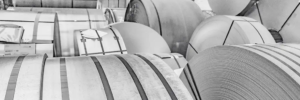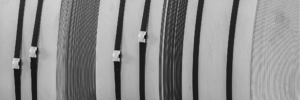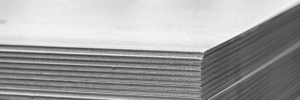| Quality | Standard | Possible coatings |
|---|---|---|
| CR420LA | VDA 239-100 | UC, EG, GI, GA, AS, ZM |
| Testing direction | Yield Point Re (MPa) | Tensil Strength Rm (MPa) | Elongation type 1 A50 (in %) | Type 2 A80 (in %) | Type 3 A50 (in %) |
|---|---|---|---|---|---|
| L | 420 – 520 | 480 – 600 | ≥ 18 | ≥ 17 | ≥ 18 |
| C % | Si % | Mn % | P % | S % | Al % | Ti % | Nb % | Cu % |
|---|---|---|---|---|---|---|---|---|
| ≤ 0,12 | ≤ 0,50 | ≤ 1,65 | ≤ 0,030 | ≤ 0,025 | ≥ 0,015 | ≤ 0,15 | ≤ 0,09 | ≤ 0,20 |
With CR420LA grade, you enter the realm of high-strength, cold-rolled thin sheets, designed for the most demanding applications in modern automotive manufacturing. Within the VDA 239-100 standard, CR420LA represents a significant leap in strength compared to lower grades, while still maintaining residual formability. This specific combination of properties makes the material a crucial element in the passive safety structure of vehicles. The development and standardization of this grade are a direct result of the steadily increasing demands for energy absorption during collisions. CR420LA is therefore not a general-purpose steel, but rather a highly specialized material whose application is explicitly limited to the automotive industry, where its mechanical performance characteristics are maximized.
Properties
Its mechanical properties are impressive, reflecting its role as a high-performance steel. The minimum yield strength (Rp0.2) is 420 MPa, and the minimum tensile strength (Rm) is 480 MPa. These values clearly demonstrate the material’s load-bearing capacity. As a direct effect of its increased strength, the elongation at break is reduced compared to lower grades like CR340LA or CR380LA, but still remains at a minimum of 17%. This ductility reserve is crucial because it allows for a certain degree of cold forming, even though the part geometry needs to be designed more carefully. The chemical composition is similar to other LA grades with a very low carbon content, typically below 0.12%. The high strength is achieved through optimized micro-alloying with elements like niobium and titanium, which strengthen the microstructure through precipitation hardening and grain refinement. This ensures excellent weldability, which is of utmost importance for the automated series production of body components. Formability in the deep-drawing process is good, but it requires precise tool design to prevent cracking.
Applications
CR420LA is typically used where high static and dynamic forces occur and significant energy absorption is required in the event of a crash. The main areas of application are:
The use of CR420LA is a clear sign of a targeted material selection, where safety is the top priority.
Conclusion
CR420LA according to VDA 239-100 represents a milestone in the development of cold-rolled steels for automotive manufacturing. Its combination of high strength and sufficient formability makes it an ideal material for safety-critical structural parts that must function reliably under extreme loads. For engineers and technicians working on the development of next-generation car bodies, CR420LA offers the opportunity to reconcile the goals of lightweight construction and passive safety. It’s a material that pushes the technological boundaries of cold forming to enable more robust, lighter, and efficient vehicles.
Delivery Forms

Ihr Ansprechpartner
Alex Bachmann
+49 2841/60041 120
+49 173/7545333
Alex.Bachmann@ESB-Group.com






